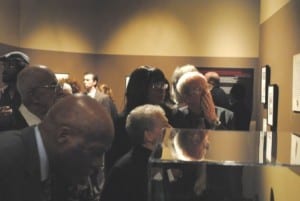When the Going Gets Tough: Confronting Difficult Subjects in Your Museum
Stepping into the world of provocative exhibition can be a scary experience if it is uncharted territory for you or your staff. The good news is that, if done correctly, it can be a successful undertaking. More importantly, it might just be the most rewarding thing you ever do in terms of impacting your community.
Having worked on several exhibitions with varying degrees of controversy myself, I can honestly say that the reward far outweighs the criticism and negative feedback that may occur. The exhibition that set the tone for my understanding of the positive impact of difficult subjects was my first experience as an exhibit interpreter at the National Underground Railroad Freedom Center. The exhibition was a collection of lynching photographs titled Without Sanctuary: Lynching Photography in America, and it changed my outlook on how museums impact their communities.

Obviously, one of the greatest challenges facing Without Sanctuary was the concentration of disturbing images that awaited visitors–a sampling of death in an era before the Civil Rights Movement that is largely ignored by history books and classes. Why would anyone want to go through an exhibition like that? It was enough to prompt one local editorial to ask whether or not we really needed to know this story. The answer was an absolute YES, as 15,000 visitors experienced this provocative exhibition, and many found themselves asking what they could do to ensure something like this never happened again. Some visitors revealed that their families were involved in lynchings, either as the lynchers or the lynched. For these people, this exhibition provided an opportunity for healing and reconciliation.
Not every exhibition is at this level of controversy with its content, but if it is controversial in your community, then it will feel like it is at this level. There will be several challenges confronting you, including managing the media, determining if there should be an appropriate age level and convincing your board that this is a good idea. Positive press releases and addressing the key points you want stressed in an interview are critical when attracting media exposure. Depending on the content, you may decide that the local 4th grade class, for example, is not ready to view this exhibition, and you have to be prepared to explain why and defend your position. Board members obviously can be a little trickier. But, if you can get them to understand the importance of this type of exhibition to the community, as well as the positive impact that will result, they will usually agree with limited resistance.
In the end, planning an exhibit on a difficult subject is no different than any other exhibition. There should be goals and objectives for what the visitor will come away knowing about the subject. There should be a storyline of the exhibit and how it is to be interpreted. (For example, it is up to you to decide if conspiracy theories should be included and whether artifacts or text panels will provide better interpretive information.) It will take a great deal of effort to create an effective exhibition on a difficult subject that will fulfill the mission of your organization, but keep in mind that as interpreters, ours is to provoke, not merely inform.
Confronting difficult subject matter, if done correctly, will stir the proper emotions and evoke constructive dialogue. The end result can be an impactful exhibition that provides a wonderful experience for the visitor. It can also reward you with a reminder that your work does indeed make a difference in your local community.
Jodie McFarland is a Region 8 representative of the Ohio Local History Alliance and manager of volunteer initiatives at the National Underground Railroad Freedom Center in Cincinnati, Ohio.
